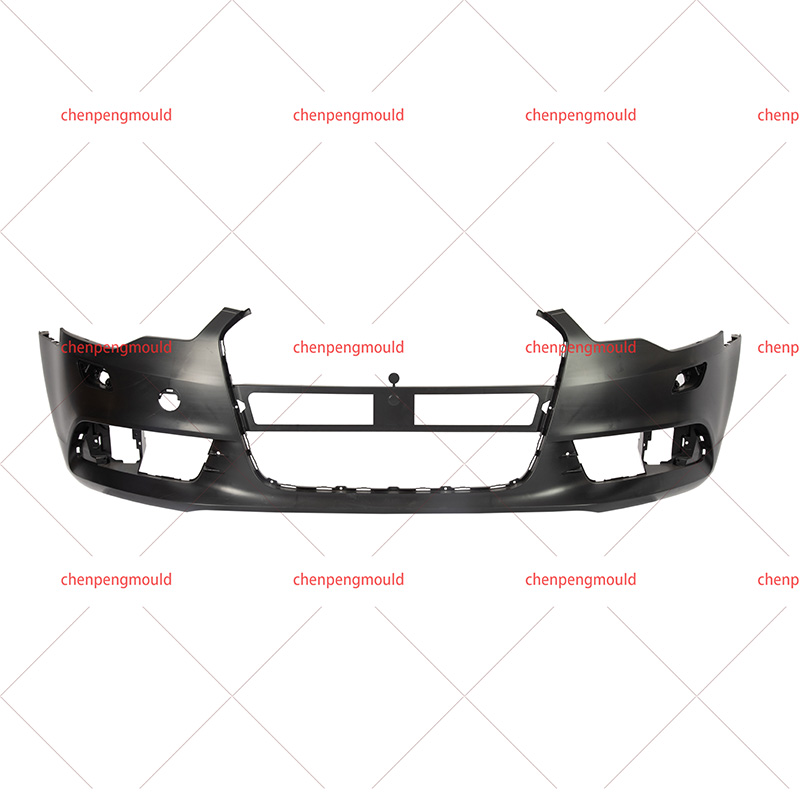China Automotive Front Bumper Molds Manufacturer Factory
Automotive design has seen remarkable advancements over the years, with a focus on enhancing both aesthetics and functionality. A crucial component in this evolution is the China Automotive Bumper Mold, which plays a pivotal role in shaping the appearance and performance of modern vehicles.
China Automotive Bumper Molds are specialized molds used in the manufacturing process of automotive bumpers. These molds are crafted from durable materials such as steel or aluminum and are designed to produce precise and consistent bumper components. They serve as the foundation for creating the intricate shapes and contours that define modern automotive bumpers.
The Importance of Automotive Bumpers:
Automotive bumpers serve as both aesthetic features and crucial safety components of vehicles. Beyond enhancing the visual appeal of automobiles, bumpers are designed to absorb impact and damage in the event of collisions. As such, the design and quality of automotive bumpers are of importance in ensuring the safety and structural integrity of vehicles.
Evolution of Automotive Bumper Molds:
Over the years, automotive bumper molds have undergone significant evolution to keep pace with changing design trends and manufacturing technologies. Early bumper molds were relatively simple in design, primarily focused on functionality rather than aesthetics. However, advancements in mold-making techniques, such as CNC machining and 3D printing, have enabled the creation of more complex and intricate bumper designs.
Innovations in Material Selection:
One of the key advancements in automotive bumper molds is the use of advanced materials. Traditional steel molds have been largely replaced by aluminum molds, which offer several advantages, including reduced weight, improved heat dissipation, and faster cooling times. Additionally, the emergence of composite materials such as carbon fiber reinforced polymers (CFRP) has further expanded the possibilities for lightweight and durable bumper designs.
Precision Engineering and Manufacturing:
With the advent of computer-aided design (CAD) and computer-aided manufacturing (CAM) technologies, automotive bumper molds can now be designed with unparalleled precision and accuracy. These advanced software tools allow engineers to create intricate bumper designs with precise tolerances, ensuring a fit and finish for every vehicle. Furthermore, CNC machining and 3D printing technologies enable the rapid prototyping and production of bumper molds, reducing times and production costs.
Customization and Personalization:
In response to consumer demand for personalized vehicles, automotive manufacturers are increasingly offering customizable bumper designs. China Automotive Bumper Molds play a crucial role in this customization process, allowing for the creation of unique bumper designs tailored to individual preferences. Whether it's integrating aerodynamic features, accentuating styling elements, or incorporating brand-specific details, bumper molds enable manufacturers to differentiate their vehicles in a competitive market.
Environmental Considerations:
In addition to performance and aesthetics, automotive manufacturers are also placing greater emphasis on sustainability and environmental responsibility. China Automotive Bumper Molds are now being designed and manufactured with eco-friendly materials and processes to environmental impact. This includes the use of recycled materials, energy-efficient manufacturing techniques, and waste reduction strategies to ensure that automotive production remains sustainable for future generations.
Future Trends and Developments:
Looking ahead, the evolution of automotive bumper molds is expected to continue as automotive design trends evolve and new technologies emerge. Advances in materials science, such as the development of lightweight and high-strength composites, are likely to influence the design and manufacturing of future bumper molds. Additionally, innovations in automation and artificial intelligence may further streamline the mold-making process, increasing efficiency and reducing costs.




 +86-18357617666
+86-18357617666








